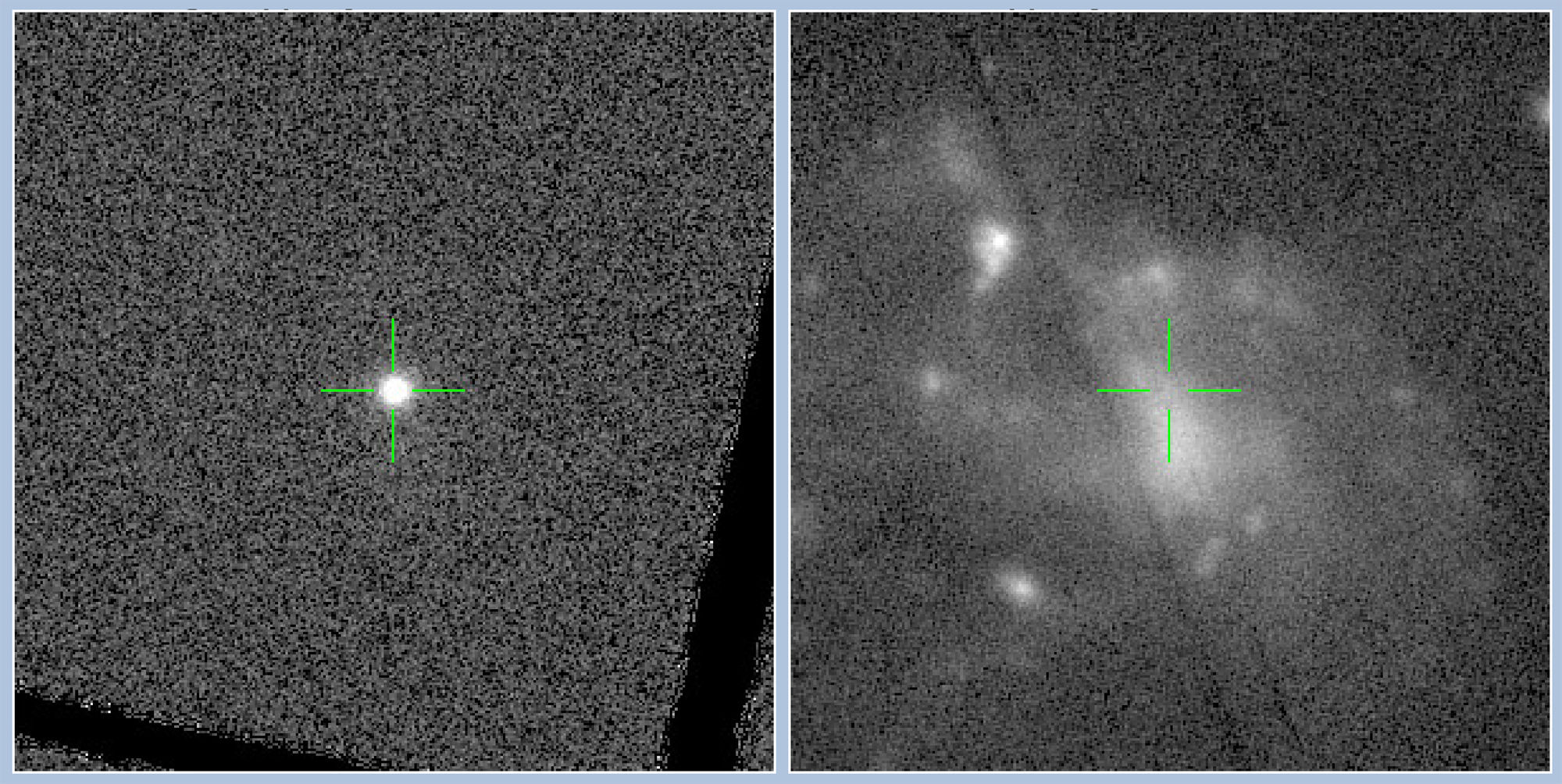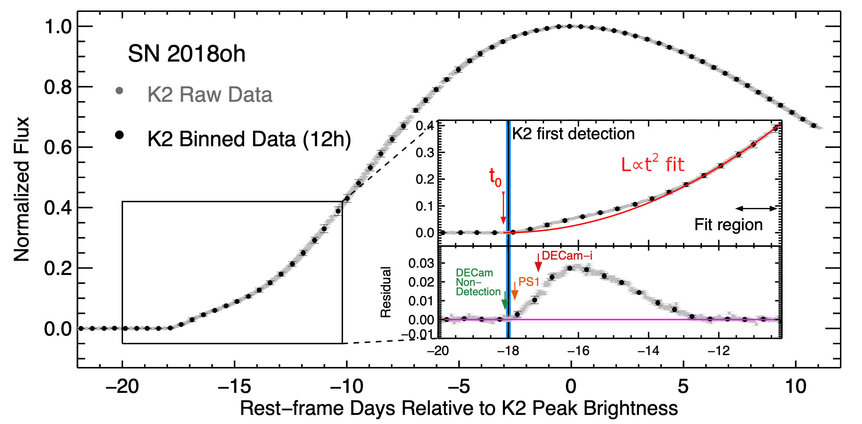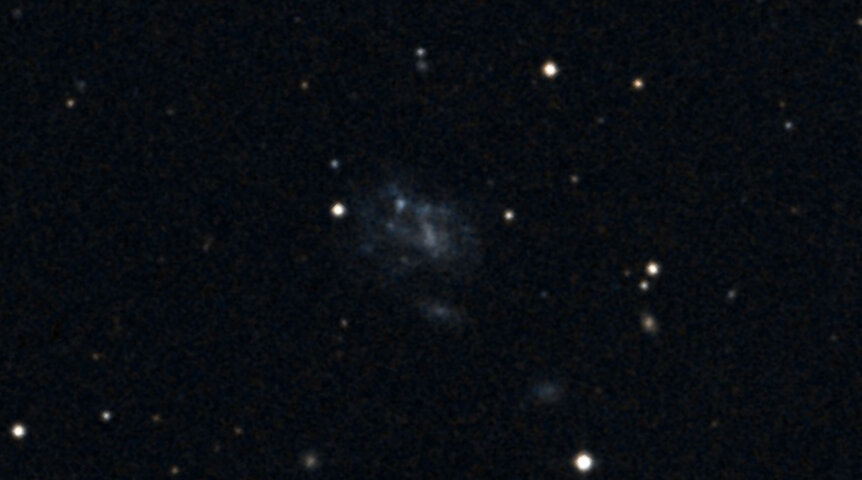Create a free profile to get unlimited access to exclusive videos, sweepstakes, and more!
So, a supernova may have torched a star nearby

When a star blows up, it's kind of a big deal.
The amount of energy released is staggering, equal to the Sun's multi-billion-year lifetime output of energy condensed down into a few weeks or months. They can be seen for huge distances, sometimes more than halfway across the visible Universe… and that makes them crucial for astronomy.
We can use them to understand how stars are born and how they die, and also as benchmarks for distance across the Universe. In 1998, two independent teams of astronomers used a special kind of supernova, called a Type Ia, to measure the expansion of the Universe and got the incredible result that the expansion is accelerating: They had discovered dark energy, a component of the Universe that was previously completely unknown but dominates the mass and energy budget of the cosmos!
So yeah, supernovae are a big deal.
A typical Type Ia supernova gets bright and then fades again over the course of a month or so, with a long fading tail in time that can last for months. To understand their physics it's important to catch one early on as it's still getting brighter, but that's hard; they can happen in any distant galaxy at any given time, so seeing one right at the start is pretty difficult.
But a team of astronomers has announced that they not only caught a Type Ia exploding right at the moment of truth, but that they also have observations from before the explosion, tying down the explosion very accurately. And even more importantly: They have lots and lots of observations taken rapidly over that time, which means the temporal coverage is unprecedented.
And when they examined the observations they saw something pretty weird.
The supernova in question is dubbed SN 2018oh, and the light from it reached Earth on February 4, 2018. It occurred in the galaxy UGC 4780, a splotchy spiral some 160 million light years away. The beauty is that this galaxy was specifically targeted as part of a campaign to use the Kepler Observatory to look for supernovae. Kepler (which ran out of fuel and was shut down just recently) was NASA's powerhouse exoplanet finder, staring at stars for long periods of time to look for dips in brightness when a planet passed in front of the star.
That skill translates perfectly to supernova hunting, too. UGC 4780 was observed every 30 minutes, so there is plenty of data from before the star blew up and during the brightening phase itself. Together with ground-based observations (several of which you can see here, including this one which shows the SN near its peak), this is one of the best-observed Type Ia explosions ever seen.
The observations are so good, in fact, that a weirdness popped up almost immediately: The explosion didn't simply get brighter as they usually do, but for a short time brightened at a much faster rate than usual, getting three times brighter than a normal supernova like that over the same time range. Then, after a few days, the increase in brightness slowed back to normal. When you plot the brightness over time, you can see this bump in the graph.
Except for that bump, this is a perfectly normal Type Ia supernova. So what caused the bump? Well, this is where this gets fun. And by "fun" I mean slightly "terrifying."
A Type Ia supernova is when a white dwarf explodes. These are the very dense and hot cores of stars like the Sun that have, in a sense, died: The outer layers blow off, revealing the core of the star. The gravity on such a beast is fierce. If the white dwarf happens to orbit close to a normal star, it can siphon matter off, which piles up on the dwarf's surface. If enough accumulates, the intense gravity can cause it to undergo nuclear fusion. If the conditions are just right, this can trigger such a huge blast that the entire star explodes, shredding itself into vapor. The energy released is soul-crushing: a supernova.
Another way they can explode if two white dwarfs orbit each other. Over very long periods of time they spiral in, collide, and, well, bang! Supernova.
In neither of these cases do you necessarily expect a period where the brightening increases for a few days, then settles back down. Unless…
The astronomer came up with three ways something like that might happen. Two of them involve the structure of the white dwarf itself — in one it has a thin shell of helium on the surface like the Earth's crust, which explodes first; the other is if there is a thin layer of nickel inside the white dwarf that gets blasted out, which can alter the way we see stuff below it and changes the brightness. The third idea is that the blast from the explosion slams into the normal Sun-like star the white dwarf orbits. This can create a nasty shock wave that heats up the star and the material around it for several days until the bulk of the blast passes.
All three do an adequate job explaining the bump, but it also happens that the bump is a little bit brighter in blue light than other colors. That's more what you expect from the blast wave hitting the companion star, so the authors favor that scenario (though they can't rule out the other two).
And that's what I mean by terrifying. The total energy emitted per second of the bump peaked at about 4x1037 ergs — ten thousand times the luminosity of the Sun.
Holy stellar firecrackers. Mind you, that's just the bump. The supernova itself was far, far brighter. That star got cooked.
There's a pretty interesting postscript to this, too. It's not clear which method makes a Type Ia, the two white dwarfs colliding, or the single white dwarf sucking down matter from a normal companion (or maybe both). Astronomers have argued back and forth about this for decades. The double collision argument is compelling, and seems to explain most Type Ias we see. The Type Ia supernovae IDed as being from a single white dwarf tend to be oddballs in one way or another, and so many astronomers don't think that's the most common scenario.
But if SN 2018oh's bump is due to it torching a nearby companion, that changes things. Because other than that the behavior is completely normal for a Type Ia, the only reason we see the bump at all is because of the extraordinary coverage of the early times in the blast. This could mean that lots of normal Type Ia supernovae are from this kind of system… further muddying the argument about what causes them.
That's fun! I mean, it's fun when we have tons of observations of a phenomenon but we're not sure about the underlying cause, and then new observations come along and throw a monkey in the wrench. That means there's stuff we still haven't figured out yet, pieces of the puzzle we didn't even have before and now they must fit in.
Puzzles are fun. And when your pieces are entire stars that explode, well, that just makes it funner.





























